-
 Bitcoin
Bitcoin $105,953.9980
3.06% -
 Ethereum
Ethereum $2,445.3292
6.68% -
 Tether USDt
Tether USDt $1.0006
-0.03% -
 XRP
XRP $2.1968
7.03% -
 BNB
BNB $643.2903
2.13% -
 Solana
Solana $144.2799
3.82% -
 USDC
USDC $1.0000
-0.03% -
 TRON
TRON $0.2739
0.49% -
 Dogecoin
Dogecoin $0.1642
4.47% -
 Cardano
Cardano $0.5834
5.49% -
 Hyperliquid
Hyperliquid $38.0741
2.80% -
 Sui
Sui $2.7741
7.56% -
 Chainlink
Chainlink $13.4107
11.26% -
 Bitcoin Cash
Bitcoin Cash $450.4828
-0.61% -
 UNUS SED LEO
UNUS SED LEO $9.1301
0.64% -
 Stellar
Stellar $0.2476
5.49% -
 Avalanche
Avalanche $18.0637
5.09% -
 Toncoin
Toncoin $2.9066
2.43% -
 Shiba Inu
Shiba Inu $0.0...01160
4.01% -
 Hedera
Hedera $0.1527
8.00% -
 Litecoin
Litecoin $84.6122
2.37% -
 Monero
Monero $317.6076
5.76% -
 Ethena USDe
Ethena USDe $1.0008
0.02% -
 Polkadot
Polkadot $3.4519
5.27% -
 Dai
Dai $1.0000
-0.03% -
 Bitget Token
Bitget Token $4.2835
5.62% -
 Uniswap
Uniswap $7.0443
9.78% -
 Pepe
Pepe $0.0...09964
7.41% -
 Pi
Pi $0.5391
4.64% -
 Aave
Aave $264.1743
11.26%
Is it dangerous that the price hits a new high but the MACD red column fails to expand?
A new price high without MACD histogram expansion signals weakening momentum and potential bearish divergence, warning traders of possible trend reversal or pullback.
Jun 25, 2025 at 01:42 am

Understanding the MACD Indicator and Its Components
The Moving Average Convergence Divergence (MACD) is a popular technical analysis tool used in cryptocurrency trading to identify potential trend reversals or continuations. It consists of three main components: the MACD line, the signal line, and the MACD histogram (often referred to as the red column). The MACD line is calculated by subtracting the 26-period Exponential Moving Average (EMA) from the 12-period EMA. The signal line is typically a 9-period EMA of the MACD line, while the histogram represents the difference between these two lines.
When the price reaches a new high but the MACD red column fails to expand, it may signal a divergence between momentum and price action. This phenomenon is often interpreted as a warning sign for traders. In this context, understanding how each component interacts becomes crucial for assessing market conditions accurately.
What Does a New Price High Mean?
A new price high in the crypto market generally indicates strong bullish sentiment. Traders interpret this as a sign that buyers are in control and that demand continues to outweigh supply. However, not all new highs are created equal. If the MACD histogram does not confirm this move with an expanding red bar, it suggests that the upward momentum might be weakening despite rising prices.
In traditional technical analysis, such a situation is known as a bearish divergence. This occurs when the price makes higher highs, but the oscillator—in this case, the MACD histogram—makes lower highs. It implies that although the price is climbing, the underlying strength of the uptrend is diminishing. This can lead to sudden pullbacks or even trend reversals.
Why the MACD Red Column Fails to Expand
There are several reasons why the MACD red column may fail to expand during a new price high:
- Waning Buying Pressure: Even though the price is moving up, fewer buyers are stepping in to push the rally further.
- Profit-Taking by Large Holders: Whales or institutional investors may be selling off positions at resistance levels, slowing momentum.
- Market Exhaustion: A prolonged rally without corrections can lead to fatigue among retail traders, resulting in weaker volume and momentum indicators.
- Hidden Distribution: Smart money may be distributing their holdings quietly, leading to a lack of real momentum behind the price rise.
Each of these scenarios contributes to a situation where the MACD histogram shrinks instead of growing, signaling that the current bullish movement may not be sustainable.
How to Identify This Scenario on Charts
To spot this condition on a chart, follow these steps:
- Look for a clear new high in price across major timeframes (e.g., 4-hour, daily).
- Observe the corresponding MACD histogram values at those highs.
- Compare the height of the red bars during previous highs versus the current one.
- Ensure that the MACD line remains above the signal line, confirming the uptrend is still technically intact, even if momentum is fading.
This visual comparison helps traders identify potential bearish divergences early. Tools like TradingView allow users to draw trendlines on the histogram itself, making it easier to compare peaks and valleys in momentum relative to price action.
Implications for Cryptocurrency Traders
For active traders, especially those involved in swing or day trading within the crypto space, recognizing this divergence can be vital. When the price hits a new high but the MACD red column doesn't expand, it's often seen as a warning sign rather than a sell signal. Here’s what different types of traders might consider:
- Day Traders: May look to reduce long exposure or initiate short positions once confirmation patterns appear, such as a bearish candlestick reversal near resistance.
- Swing Traders: Might tighten stop-losses or take partial profits off the table to protect gains.
- Long-Term Investors: Could view this as a consolidation phase and wait for clearer signals before adjusting positions.
It’s also important to cross-reference other indicators like Relative Strength Index (RSI) or volume profiles to gain a more comprehensive picture before making any decisions.
Frequently Asked Questions
Q: Can a shrinking MACD red column ever be bullish?
A: Yes, depending on the context. If the price is in a downtrend and begins to rise while the MACD histogram contracts negative bars (green columns), it could indicate strengthening bullish momentum.
Q: Should I immediately sell if I see this divergence?
A: No. A divergence is a warning, not a definitive signal. Confirmatory price action or additional indicators should be used before executing trades.
Q: Is this pattern reliable in volatile crypto markets?
A: While no indicator is foolproof, the MACD histogram divergence has historically provided useful insights in both trending and ranging crypto markets. However, false signals can occur due to high volatility.
Q: How do I differentiate between a normal pullback and a bearish divergence?
A: A normal pullback usually sees the MACD histogram retrace proportionally with price movement. In contrast, a bearish divergence shows the histogram failing to match the price’s new high, indicating weakening momentum.
Disclaimer:info@kdj.com
The information provided is not trading advice. kdj.com does not assume any responsibility for any investments made based on the information provided in this article. Cryptocurrencies are highly volatile and it is highly recommended that you invest with caution after thorough research!
If you believe that the content used on this website infringes your copyright, please contact us immediately (info@kdj.com) and we will delete it promptly.
- BlockDAG: The Cryptocurrency ROI Revolution
- 2025-06-25 06:45:12
- Layer 1 Crypto Token Presales: What's Hot in the NYC Crypto Scene?
- 2025-06-25 06:30:12
- Ethereum, Investors, and Memecoins: A Wild Ride on the Crypto Coaster
- 2025-06-25 06:30:12
- SEI Price Explodes: Is This Just the Beginning?
- 2025-06-25 07:05:13
- Meme Coins Mania: Arctic Pablo and the Hunt for Presale Gains
- 2025-06-25 06:50:13
- Mark Cuban, Meme Coins, and Scams: A Cautionary Tale
- 2025-06-25 07:05:13
Related knowledge
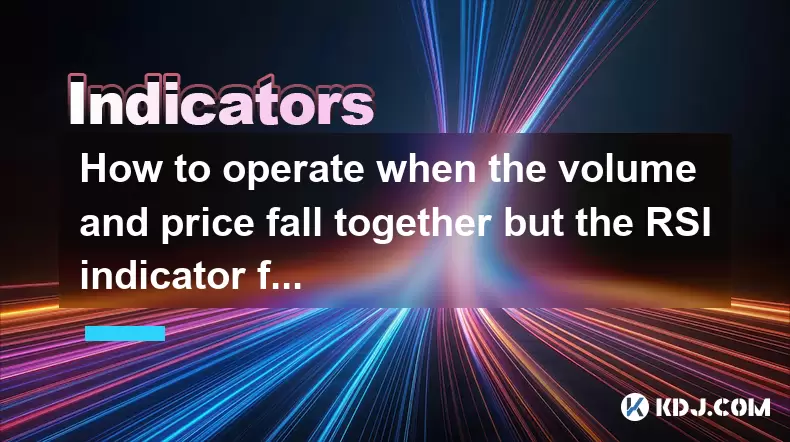
How to operate when the volume and price fall together but the RSI indicator forms a bottom divergence?
Jun 25,2025 at 04:29am
Understanding the Concept of RSI Bottom DivergenceWhen analyzing cryptocurrency price charts, traders often rely on technical indicators to spot potential reversals. One such signal is a bottom divergence in the Relative Strength Index (RSI). This occurs when the price makes a new low, but the RSI does not confirm that low and instead forms a higher low...
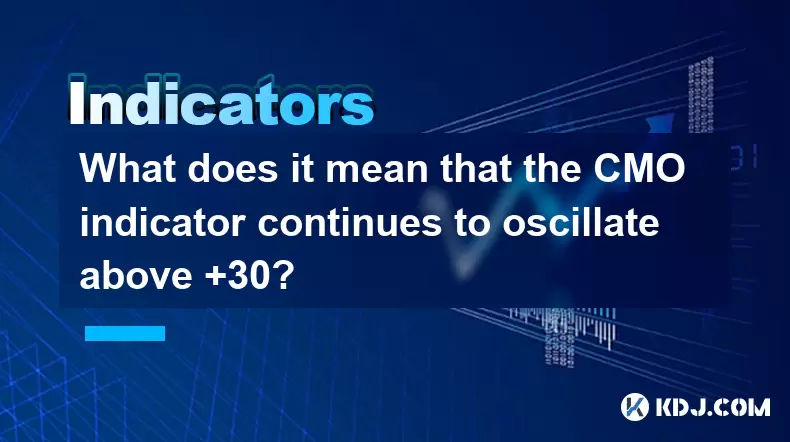
What does it mean that the CMO indicator continues to oscillate above +30?
Jun 25,2025 at 03:29am
Understanding the CMO IndicatorThe Chande Momentum Oscillator (CMO) is a technical analysis tool developed by Tushar Chande to measure momentum in financial markets. In cryptocurrency trading, the CMO helps traders identify overbought or oversold conditions and potential trend reversals. The oscillator ranges from -100 to +100, with values above zero in...

What does it mean that the ATR indicator suddenly doubles after hitting a new low this year?
Jun 24,2025 at 11:57pm
Understanding the ATR IndicatorThe Average True Range (ATR) is a technical analysis indicator used to measure market volatility. Developed by J. Welles Wilder, ATR calculates the average price range between a security’s high and low over a specific period—typically 14 periods. It does not indicate the direction of price movement but rather how volatile ...
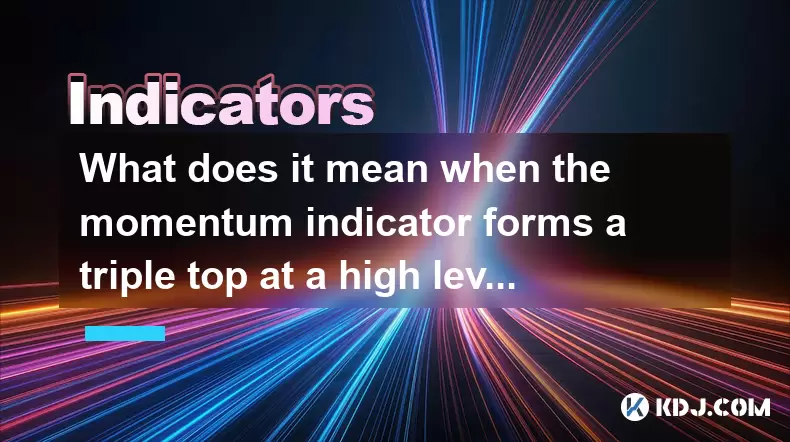
What does it mean when the momentum indicator forms a triple top at a high level?
Jun 25,2025 at 03:15am
Understanding the Momentum Indicator in Cryptocurrency TradingThe momentum indicator is a widely used technical analysis tool that measures the rate of change in price movements over a specified period. In cryptocurrency trading, where volatility is high and trends can reverse rapidly, this indicator helps traders identify potential trend reversals or c...
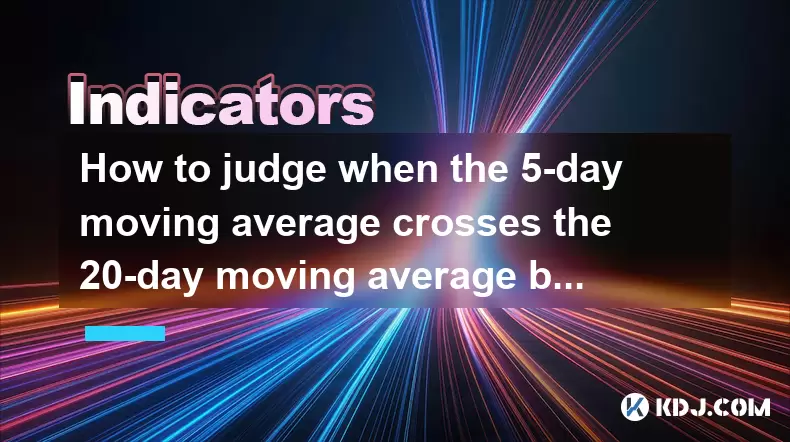
How to judge when the 5-day moving average crosses the 20-day moving average but the RSI shows a top divergence?
Jun 25,2025 at 06:28am
Understanding the Basics of Moving Averages and RSIIn technical analysis, moving averages are essential tools used to identify trends in price movements. The 5-day moving average (MA) is a short-term indicator that reflects recent price action, while the 20-day MA offers a broader perspective over a longer period. When these two lines intersect, it's kn...
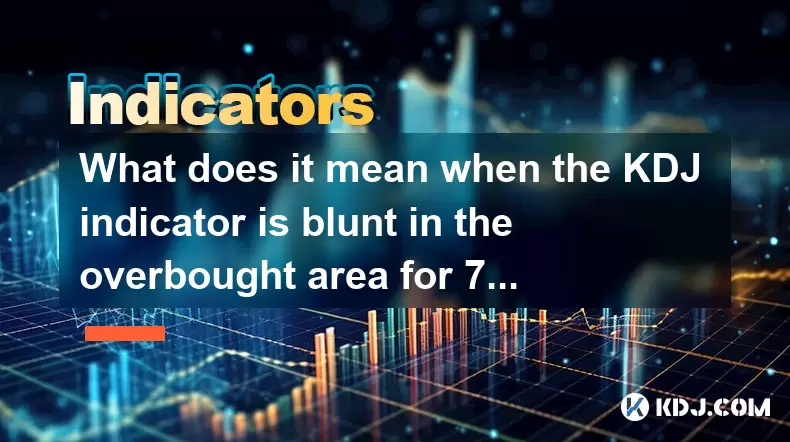
What does it mean when the KDJ indicator is blunt in the overbought area for 7 consecutive trading days?
Jun 25,2025 at 08:21am
Understanding the KDJ Indicator in Cryptocurrency TradingThe KDJ indicator, also known as the stochastic oscillator, is a momentum-based technical analysis tool widely used in cryptocurrency trading. It consists of three lines: the %K line (fast stochastic), the %D line (slow stochastic), and the %J line (which reflects the divergence between %K and %D)...

How to operate when the volume and price fall together but the RSI indicator forms a bottom divergence?
Jun 25,2025 at 04:29am
Understanding the Concept of RSI Bottom DivergenceWhen analyzing cryptocurrency price charts, traders often rely on technical indicators to spot potential reversals. One such signal is a bottom divergence in the Relative Strength Index (RSI). This occurs when the price makes a new low, but the RSI does not confirm that low and instead forms a higher low...

What does it mean that the CMO indicator continues to oscillate above +30?
Jun 25,2025 at 03:29am
Understanding the CMO IndicatorThe Chande Momentum Oscillator (CMO) is a technical analysis tool developed by Tushar Chande to measure momentum in financial markets. In cryptocurrency trading, the CMO helps traders identify overbought or oversold conditions and potential trend reversals. The oscillator ranges from -100 to +100, with values above zero in...

What does it mean that the ATR indicator suddenly doubles after hitting a new low this year?
Jun 24,2025 at 11:57pm
Understanding the ATR IndicatorThe Average True Range (ATR) is a technical analysis indicator used to measure market volatility. Developed by J. Welles Wilder, ATR calculates the average price range between a security’s high and low over a specific period—typically 14 periods. It does not indicate the direction of price movement but rather how volatile ...

What does it mean when the momentum indicator forms a triple top at a high level?
Jun 25,2025 at 03:15am
Understanding the Momentum Indicator in Cryptocurrency TradingThe momentum indicator is a widely used technical analysis tool that measures the rate of change in price movements over a specified period. In cryptocurrency trading, where volatility is high and trends can reverse rapidly, this indicator helps traders identify potential trend reversals or c...

How to judge when the 5-day moving average crosses the 20-day moving average but the RSI shows a top divergence?
Jun 25,2025 at 06:28am
Understanding the Basics of Moving Averages and RSIIn technical analysis, moving averages are essential tools used to identify trends in price movements. The 5-day moving average (MA) is a short-term indicator that reflects recent price action, while the 20-day MA offers a broader perspective over a longer period. When these two lines intersect, it's kn...

What does it mean when the KDJ indicator is blunt in the overbought area for 7 consecutive trading days?
Jun 25,2025 at 08:21am
Understanding the KDJ Indicator in Cryptocurrency TradingThe KDJ indicator, also known as the stochastic oscillator, is a momentum-based technical analysis tool widely used in cryptocurrency trading. It consists of three lines: the %K line (fast stochastic), the %D line (slow stochastic), and the %J line (which reflects the divergence between %K and %D)...
See all articles
























































































